Lynn Painter’s Better Than the Movies captivates readers with its charming blend of romance and humor. This YA rom-com explores love, self-discovery, and friendship, resonating deeply with teenage audiences. Its witty dialogue and relatable characters have made it a favorite, available in PDF and eBook formats.
Overview of the Book
Better Than the Movies by Lynn Painter is a heartwarming young adult romantic comedy that captures the essence of teenage romance and self-discovery. Published in 2021 by Simon & Schuster Books for Young Readers, the book follows Liz Buxbaum, a hopeless romantic, and her journey to win the heart of her long-time crush, Michael. With the help of her obnoxious yet charming neighbor, Wes, Liz schemes to get noticed, only to find herself drawn to Wes instead. This relatable and humorous story explores themes of love, friendship, and personal growth, making it a standout in modern YA literature. The book is widely available in PDF and eBook formats, appealing to fans of rom-coms and coming-of-age tales.
Importance of “Better Than the Movies” in Modern YA Literature
Better Than the Movies stands out as a refreshing addition to modern YA literature, blending witty dialogue, relatable characters, and heartfelt moments. Its unique take on romantic comedy resonates with teenagers, offering a realistic portrayal of love, friendship, and self-discovery in the digital age. The book’s ability to balance humor with emotional depth appeals to a wide audience, making it a standout in the genre. By focusing on themes of personal growth and the complexities of relationships, Painter’s work contributes to the evolving trends in YA literature, providing readers with a story that feels both authentic and engaging. Its popularity underscores its relevance in contemporary young adult storytelling.

Plot Summary
Liz Buxbaum, a hopeless romantic, schemes with her obnoxious neighbor Wes to win her crush Michael’s heart, but their rivalry turns into an unexpected romance.
Setting and Background
The story unfolds in a contemporary suburban setting, typical of young adult romantic comedies. Liz Buxbaum, a hopeless romantic, lives in a small town where everyone knows each other, fostering a tight-knit community vibe. Her rivalry-turned-romance with neighbor Wes evolves against the backdrop of familiar places like their homes, school, and local hangouts. The setting mirrors Liz’s romantic ideals, blending everyday life with her grand, movie-inspired fantasies. This relatable environment allows readers to connect with Liz’s journey of self-discovery and her humorous attempts to navigate love and friendship in a world where reality often clashes with her cinematic daydreams.
Main Characters: Liz Buxbaum and Wes
Liz Buxbaum is a perpetual daydreamer, a hopeless romantic who has given her heart to her long-time crush, Michael. Her idealistic view of love is deeply influenced by romantic comedies, often leading her to fantasize about fairytale endings. Wes, her obnoxious yet charming neighbor, challenges her notions with his practicality and wit. Their rivalry turns into an unlikely partnership as they scheme to get Michael’s attention, revealing deeper feelings between them. Liz’s vulnerability and Wes’s hidden kindness create a dynamic that keeps readers engaged, blending humor and heart in their evolving relationship.
Central Conflict and Plot Development
The central conflict revolves around Liz Buxbaum’s quest to win the heart of her forever crush, Michael, with the help of her obnoxious yet charming neighbor, Wes. Liz, a hopeless romantic, schemes to secure a happily-ever-after moment, while Wes challenges her idealistic views. Their rivalry turns into an unlikely partnership as they work together to get Michael’s attention. However, their collaboration sparks unexpected feelings between them, complicating their mission. As Liz navigates her emotions and the pressures of high school, the story unfolds with humor and heart, leading to a climactic moment where Liz must confront her true feelings and decide between her long-held crush and the boy next door.
Climax and Resolution
The climax unfolds as Liz and Wes’s scheme to win Michael’s heart reaches its peak, leading to a dramatic and emotional confrontation at a pivotal moment. Liz is forced to confront her true feelings, realizing that her connection with Wes runs deeper than her long-held crush on Michael. The resolution brings a heartfelt conclusion, as Liz embraces her growth and the unexpected romance with Wes. Their relationship evolves from rivalry to love, leaving Liz with a newfound understanding of herself and romance. The story concludes on a hopeful note, emphasizing self-discovery and the power of genuine connections, leaving readers with a satisfying and heartfelt ending.
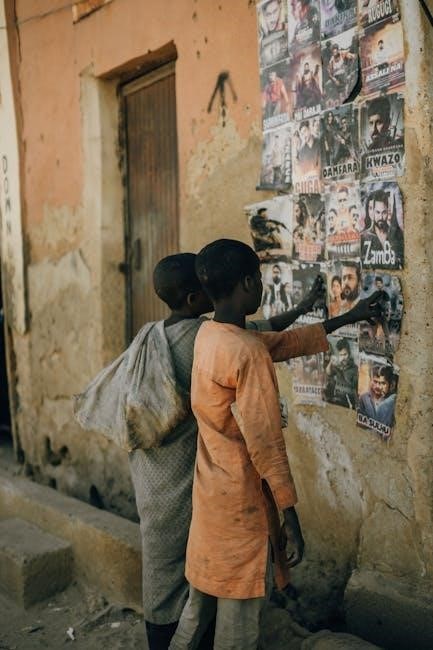
Main Themes
The novel explores themes of love, friendship, and self-discovery, set against the backdrop of teenage life and romantic aspirations, highlighting personal growth and relationships.
Love and Romance in the Digital Age
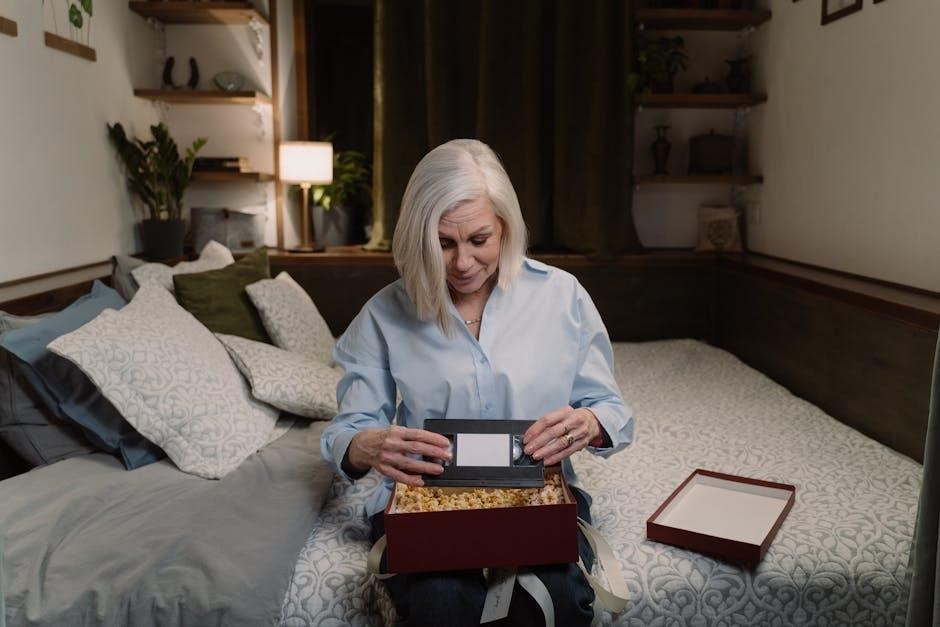
Liz Buxbaum’s journey in Better Than the Movies highlights the complexities of love and romance in the digital age. Her reliance on social media to catch Michael’s attention underscores the modern teenager’s approach to relationships. The novel explores how technology influences romantic connections, blending traditional romantic ideals with contemporary communication. Liz’s strategies, from crafting perfect texts to orchestrating online appearances, reflect the pressures of presenting a digital persona. The story delves into the tension between real emotions and curated online interactions, offering a relatable portrayal of love in a world dominated by screens and social platforms, where authenticity often competes with perception.
Friendship and Neighborly Rivalries
Liz Buxbaum and Wes’s relationship is built on a foundation of childhood rivalry and undeniable chemistry. Their constant banter and competitive nature mask a deep understanding of each other, forged through years of living next door. Despite their initial animosity, they form an unlikely alliance to help Liz win her crush’s attention, revealing a bond that transcends rivalry. Their friendship evolves as they challenge each other’s beliefs and grow together, blending humor and heart. This dynamic highlights how rivalry can turn into camaraderie, and even romance, showcasing the complexities of neighborly relationships in the modern world, where friendship and love often intertwine unpredictably.
Self-Discovery and Personal Growth
Liz Buxbaum’s journey in Better Than the Movies is a poignant exploration of self-discovery and personal growth. Initially, Liz is a hopeless romantic, captivated by fairy-tale endings and idealized love stories. However, her experiences with Wes and Michael challenge her perceptions, forcing her to confront the realities of love and relationships. Through her interactions, Liz learns to let go of her rigid expectations and embrace the complexities of real-life connections. This transformation highlights her evolution from a daydreamer to a young woman with a deeper understanding of herself and her place in the world. Her growth is both heartfelt and relatable, making her story resonate with readers navigating their own paths of self-discovery.
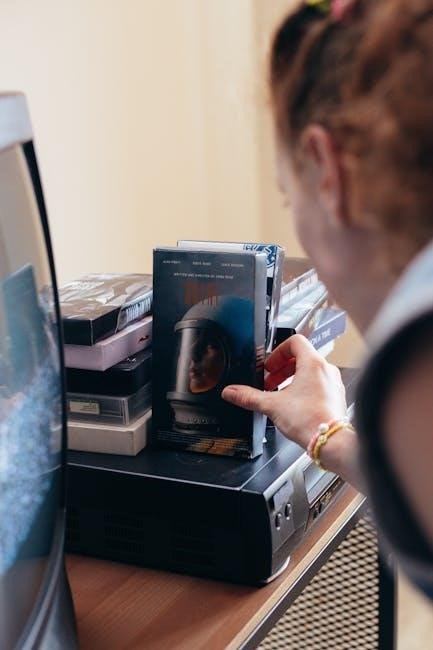
Character Analysis
Liz Buxbaum, a hopeless romantic, and Wes, her obnoxious yet charming neighbor, drive the story with their evolving dynamics. Their rivalry turns into unexpected mutual growth.
Liz Buxbaum: The Hopeless Romantic

Liz Buxbaum is portrayed as a perpetual daydreamer, deeply invested in romantic ideals. Her unwavering belief in happily-ever-after moments fuels her quest to win Michael’s heart. Despite her naivety, Liz’s genuine nature and determination make her relatable. Her journey from idealistic fantasies to real-life connections highlights her growth. The novel skillfully captures her emotional depth, making her a sympathetic character for readers who resonate with her romantic aspirations and vulnerability.
Wes: The Obnoxious yet Charming Neighbor
Wes, Liz’s childhood neighbor, is initially portrayed as obnoxious and rivalry-driven, often clashing with Liz. However, his charm gradually shines through as their relationship evolves. Their partnership to help Liz win Michael’s attention reveals Wes’s deeper, more vulnerable side. His transformation from an annoying neighbor to a key figure in Liz’s life highlights his complexity. Wes’s character grows as he navigates his feelings, showcasing a balance of humor and sincerity. His dynamic with Liz is central to the story, illustrating how rivalry can blossom into unexpected romance. Wes’s charm and relatability make him a memorable and endearing character in the novel.
Michael: The Untouchable Crush
Michael is the epitome of Liz’s long-held crush, embodying everything she idealizes in a romantic partner. He is portrayed as the quintessential “perfect” guy, with a charm that captivates Liz from afar. Despite his elusive nature, Michael’s presence drives much of the plot, as Liz schemes to catch his attention with Wes’s help. While he remains somewhat distant, his character serves as a catalyst for Liz’s growth. The dynamic between Liz and Michael highlights themes of unrequited love and the reality of romantic ideals. Michael’s role, though not as prominent as Wes’s, is pivotal in Liz’s journey of self-discovery and understanding true connection.

Writing Style and Humor
Lynn Painter’s writing in Better Than the Movies masterfully blends humor with heartfelt moments. Witty dialogue and comedic situations create a lighthearted, engaging narrative.
Lynn Painter’s Approach to Romantic Comedy
Lynn Painter’s approach to romantic comedy in Better Than the Movies is fresh and engaging. By infusing relatable teenage experiences with witty dialogue and humorous situations, Painter crafts a story that feels both authentic and entertaining. Her ability to balance heartfelt moments with lighthearted humor makes the novel a standout in the YA genre. The dynamic between Liz and Wes, filled with banter and rivalry, showcases Painter’s skill in creating chemistry between characters. This blend of humor, romance, and self-discovery resonates with readers, making her work a delightful read for fans of romantic comedies.
Humor and Wit in Dialogue
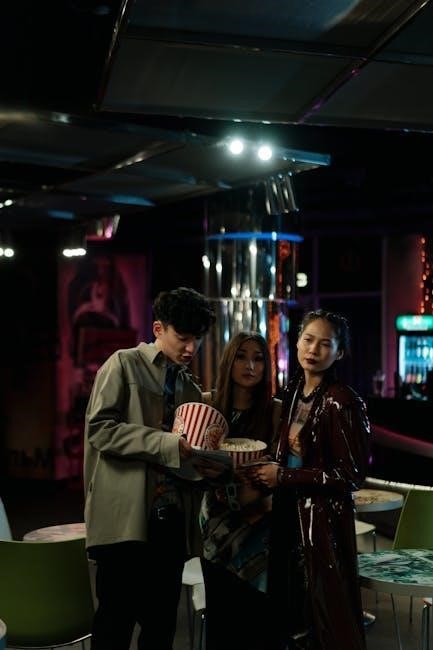
Lynn Painter masterfully infuses humor and wit into the dialogue of Better Than the Movies, creating a lively and engaging narrative. The banter between Liz and Wes is sharp and relatable, filled with clever comebacks and comedic timing. Painter’s ability to craft authentic teenage conversations adds depth and charm to the story. The humor often stems from the characters’ quirks and misunderstandings, making their interactions feel genuine and entertaining. This witty dialogue not only enhances the romance but also highlights the characters’ growth and chemistry, making the book a delightful read for fans of romantic comedies.
Relatability to Teenage Audiences
Better Than the Movies resonates deeply with teenage audiences through its authentic portrayal of first crushes, friendships, and self-discovery. Liz’s hopeless romanticism and her rivalry-turned-chemistry with Wes mirror the emotional highs and lows of adolescence. The book’s lighthearted tone and realistic dialogue make it easy for teens to connect with the characters’ struggles and triumphs. Painter’s ability to capture the intensity of teenage emotions, from the excitement of a crush to the awkwardness of misunderstandings, creates a story that feels both personal and universal. This relatability, coupled with its modern humor, makes the novel a favorite among young readers seeking stories that reflect their own experiences and aspirations.
Reception and Reviews
Better Than the Movies has garnered widespread acclaim as a USA TODAY and New York Times bestseller. Praised as sweet and funny, it captivates fans of romantic comedies.
Critical Acclaim and Ratings
Better Than the Movies has received widespread critical acclaim, earning its place as a USA TODAY and New York Times bestseller. Reviewers praise its witty dialogue, relatable characters, and heartfelt romance, drawing comparisons to authors like Kasie West and Jenn Bennett. The novel has been described as “sweet and funny” by Kerry Winfrey, resonating with fans of romantic comedies. With a 4-star rating on platforms like Google Books and Goodreads, it has captured the hearts of many, solidifying its reputation as a standout in YA literature. Its engaging narrative and modern themes continue to charm readers of all ages.
Reader Responses and Fan Reactions
Readers have overwhelmingly embraced Better Than the Movies, praising its witty dialogue and heartfelt romance. Fans on Goodreads and social media highlight the relatable dynamics between Liz and Wes, with many appreciating the enemies-to-lovers trope. The book’s humor and lighthearted tone have resonated with teenage audiences, making it a favorite among YA romance enthusiasts. Readers also commend the novel for its realistic portrayal of teenage emotions and friendships. The story’s charm has inspired fan discussions and recommendations, with many calling it a “comfort read” and a modern take on classic rom-com themes. Its engaging narrative continues to captivate readers worldwide.
Comparisons to Other YA Rom-Coms
Better Than the Movies draws comparisons to works by Kasie West and Jenn Bennett, known for their witty dialogue and heartfelt romance. Fans of The Upside of Unrequited and Anna and the French Kiss will appreciate the similar blend of humor and emotional depth. The novel’s enemies-to-lovers dynamic and relatable protagonist also evoke comparisons to To All the Boys I’ve Loved Before. Its lighthearted tone and romantic twists make it a standout in the YA rom-com genre, offering a fresh yet familiar take on teenage love and self-discovery. Readers familiar with these titles will find Painter’s style equally engaging and charming.
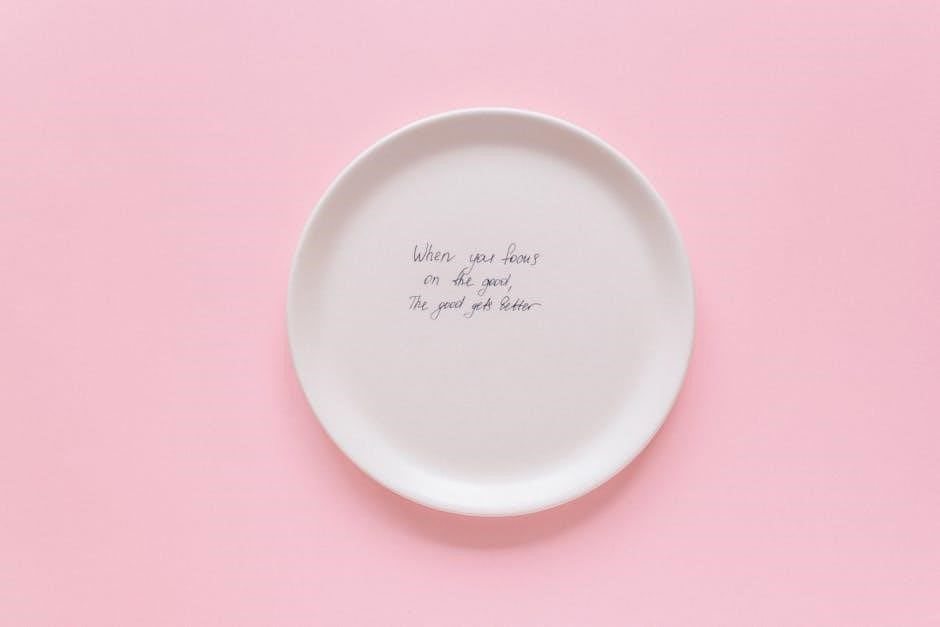
Availability and Access
Better Than the Movies is widely available in PDF and eBook formats on platforms like the NC Digital Library, OceanofPDF.com, and Flipbooks, ensuring easy reader access.
PDF and eBook Formats
Better Than the Movies is accessible in both PDF and eBook formats, catering to a variety of reading preferences. The PDF version is available for download from platforms like OceanofPDF.com and Flipbooks, offering readers a convenient way to enjoy the story. Similarly, eBook formats can be found on popular digital libraries, ensuring accessibility across devices. This versatility allows readers to immerse themselves in Liz and Wes’s charming journey, whether on a tablet, e-reader, or smartphone. The availability of these formats has contributed to the book’s widespread popularity among YA readers.
Downloading from Reliable Sources
Better Than the Movies can be downloaded from reliable sources such as NC Digital Library, OceanofPDF.com, and Flipbooks. These platforms offer the book in PDF and eBook formats, ensuring easy access for readers. The PDF version is particularly popular, with multiple websites providing free downloads. Additionally, platforms like Google Books and Open Library allow users to preview or download the book legally. Readers are encouraged to use authorized sources to support the author and avoid unauthorized versions. This accessibility has made the novel widely available, catering to both casual readers and fans of YA romance.
Popularity in Digital Libraries
Better Than the Movies has gained significant popularity in digital libraries, with its PDF and eBook versions widely available. Platforms like NC Digital Library and Google Books offer easy access, while Flipbooks and online repositories provide additional options. The book’s presence in digital libraries has boosted its visibility, making it a favorite among YA readers. Its bestseller status and positive reviews further enhance its appeal, attracting readers seeking romantic comedies. The convenience of digital formats ensures that fans of Lynn Painter can easily discover and enjoy the story of Liz and Wes. This accessibility has contributed to its enduring popularity in modern YA literature.

Cultural Impact
Better Than the Movies has shaped teenage romantic perceptions, reflecting modern teen experiences. Its relatable themes and humor contribute to YA literature trends, resonating with young audiences globally.
Influence on Teenage Romantic Perceptions
Lynn Painter’s Better Than the Movies has profoundly influenced teenage romantic perceptions by offering a fresh, relatable take on love and relationships. The story’s focus on Liz’s unwavering belief in happily-ever-after moments, despite real-world complexities, resonates with young readers. It challenges traditional notions of romance by highlighting the importance of communication, vulnerability, and mutual respect. The dynamic between Liz and Wes, evolving from rivalry to affection, redefines expectations of love, showing it as unpredictable yet deeply meaningful. This narrative has encouraged teens to embrace authentic connections and view romance as a journey of growth and self-discovery, rather than an unattainable ideal.
Contribution to YA Literature Trends
Better Than the Movies has significantly contributed to YA literature trends by blending witty humor with heartfelt romance, appealing to a generation craving authentic stories. Its modern take on teenage romance, self-discovery, and friendship resonates deeply, aligning with the growing demand for relatable, realistic narratives. Painter’s ability to craft characters like Liz and Wes, who navigate love and rivalry with humor and vulnerability, has set a new standard in YA rom-coms. The novel’s success reflects the genre’s shift toward stories that balance lighthearted moments with emotional depth, inspiring other authors to embrace similar styles. Its popularity in digital formats further highlights its impact on contemporary YA literature.
Adaptation Potential for Film or TV
Better Than the Movies holds strong potential for film or TV adaptation due to its cinematic storytelling and relatable characters. Its romantic comedy elements, combined with the dynamic relationship between Liz and Wes, align perfectly with the popular YA genre trends in media. The novel’s humor, emotional depth, and high school setting make it ideal for a teen-focused series or movie. Studios could capitalize on its lighthearted yet heartfelt narrative, appealing to fans of To All the Boys I’ve Loved Before and The Kissing Booth. Painter’s vivid dialogue and character development provide a solid foundation for screenwriters to bring this charming story to life on screens, capturing its essence for a wider audience.
